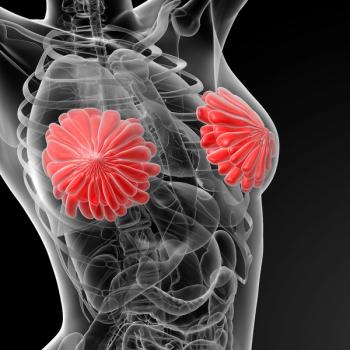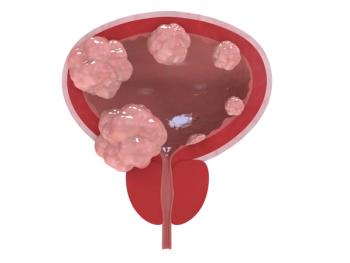
Oncology NEWS International
- Oncology NEWS International Vol 4 No 8
- Volume 4
- Issue 8
FDG PET Appears to Be Highly Specific In Detecting Malignant Breast Lesions
MINNEAPOLIS--Breast imaging with FDG PET can identify breast cancer with a high specificity, a German study has shown. This technique visualizes malignant tumor tissue by increased FDG (fluorine-18-fluorodeoxyglucose) uptake (see image on " FDG PET Imaging Visualizes Malignant Breast Lesions"), said Norbert Avril, MD, of the Department of Nuclear Medicine, Technical University, Munich.
MINNEAPOLIS--Breast imaging with FDG PET can identify breast cancerwith a high specificity, a German study has shown. This techniquevisualizes malignant tumor tissue by increased FDG (fluorine-18-fluorodeoxyglucose)uptake (see image on " FDG PET Imaging Visualizes MalignantBreast Lesions"), said Norbert Avril, MD, of the Departmentof Nuclear Medicine, Technical University, Munich.
The study, presented at the Society of Nuclear Medicine meeting,included 71 patients scheduled for breast biopsy. Two observersclassified lesions seen on PET imaging as definitely malignant(37 of 95 lesions), probably malignant (16 lesions), or unlikelyto be malignant (42 lesions). Biopsy results showed that 49 ofthe 95 tumors were malignant and 46 were benign, Dr. Avril said.
When the 16 lesions that were classified as "probably malignant"on PET imaging were considered as negative, sensitivity was 74%and specificity, 98%. If "probably malignant" resultswere regarded as positive, sensitivity was 88% and specificity,78%.
There was a significant difference between FDG uptake of benignlesions (SUV, or standardized uptake value, of 1.4 ± 0.4)and malignant tumors (SUV of 3.6 ± 2.5), Dr. Avril said.A SUV of 2.3 represented the highest value for benign breast lesions,and all tumors with higher SUV values were found to be malignant.However, there was an overlap between benign and malignant tumorsfor SUV values lower than 2.3.
Although most of the research with FDG PET in breast lesions isbeing conducted to gain a better understanding of breast tumorphysiology, the technique does have potential clinical benefits,Dr. Avril said.
"This imaging procedure can provide more accurate preoperativestaging of disease," he said. "PET can show metastaticspread to the lymph nodes in the axilla, which cannot be detectedby mammog-raphy." This means that the results could influencethe type of surgery performed and enable physicians to decidewhich patients are appropriate for breast conservation therapy,he added.
Articles in this issue
over 30 years ago
CA 125 Predicts Response to Chemo in Ovarian Caover 30 years ago
Biochemical Modulation Promising in RT-Resistant GI Cancerover 30 years ago
Cancer Institute of NJ Adds to its Staffover 30 years ago
A Century of Breast Cancer Litigation Is 'Deconstructed'over 30 years ago
New Depot Formulation of LHRH Analogue Allows 12-Week Dosingover 30 years ago
NSABP Investigation Threatens Academic Freedom for All: Fisherover 30 years ago
Cancer Fax Directory in 3rd Editionover 30 years ago
HIV-Related Malignancies Increasing, Physicians Tell Panelover 30 years ago
Breast Cancer Risk Factors Remain Elusive TargetNewsletter
Stay up to date on recent advances in the multidisciplinary approach to cancer.
















































































